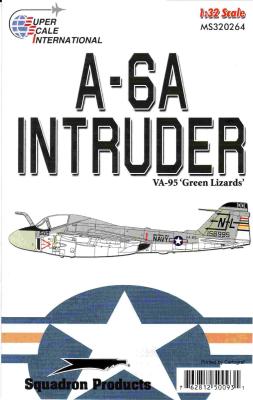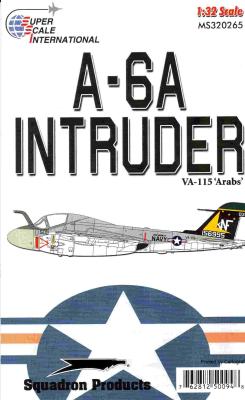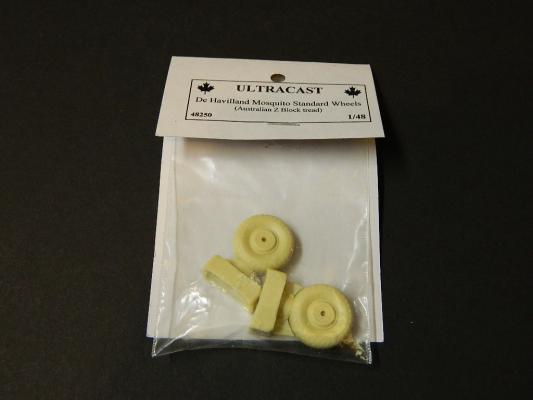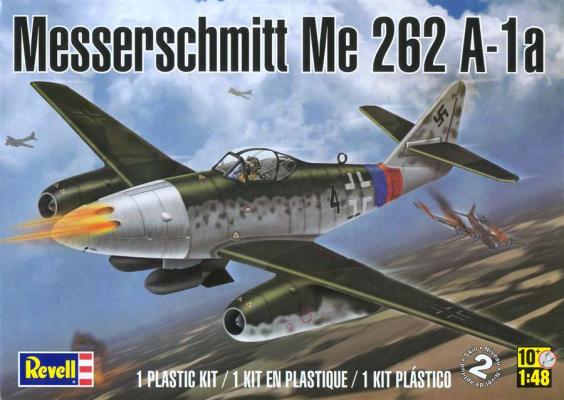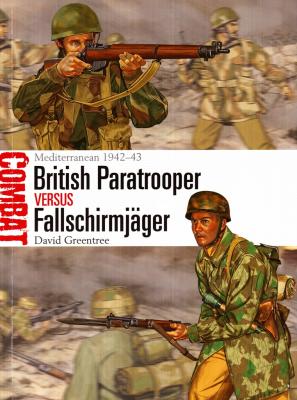Superscale continues its releases for Trumpeters 1/32nd scale A-6 with a marking set for the VA-95 Green Lizards. VA-95 has been active/inactive many times flying Skyhawks, Skyraiders and the Intruders. The decals here represent the Green Lizards during August 1974 aboard the USS Coral Sea. There are several great web sites dedicated to VA-95 and a quick Google search will find them with lots of photos.
Welcome to the IPMS/USA Reviews site!
Introduction: The primary organization of the IPMS/USA Review website is by IPMS/USA National Contest Class. Within each Class there are sub-menus by kits, decals, books, etc. The Miscellaneous Class is for items that are not class specific or that cross two or more classes.
IPMS/USA Members: We encourage you to submit reviews, both here and to the Journal. To volunteer for membership in the IPMS/USA "Reviewers Corps" and submit your own reviews, please read the Guidelines For Submitting Product Reviews.
Manufacturers, publishers, and other industry members: IPMS/USA is pleased to offer your company the opportunity for product reviews. All product reviews are performed by IPMS/USA members, and are posted in the publicly-accessible section of our website. With very few exceptions, we perform full build reviews of new kit releases, aftermarket products, and supplies. If you would care to provide product samples for review, please contact John Noack, IPMS/USA 1st VP.
To learn more about IPMS/USA, please see our About Us page.
Superscale continues its excellent decal releases with a set for Trumpeter's 1/32nd scale A-6 with this release of markings for the A-6A for the VA-115 Arabs. VA-115 transitioned to A-6's during the 1967-70 time frame and these marking represent the Arabs on board the USS Midway in 1973. Specifically, the markings are for build number 156995. The color scheme for the plane was gull gray over white with the tail in black and green cap, rudder in white and green tips and fins to the fuel tanks. The radome was tan also.
This set includes a single sheet with all the markings needed to represent this build. Stencils will come from the kit. national markings are included and the decals are well printed with great registration. The printing was done by Cartograf and is superb. Instructions are in full color and give paint colors in name and FS numbers which is great. A reference list is also provided showing appropriate books that can be used.
Ultracast is one of those companies that we AMS modelers can’t live without… Thanks up front for this excellent set, and to IPMS USA for sending it my way…Now to figure out which Mossie I’m gonna build…
These, like the previous set reviewed a few weeks ago, are simple replacement items for the Tamiya wheel and tire sets in their Mosquito kits. As previously done, I have assembled one of each, the Tamiya kit item on the left, and the Ultracast wheel/tire on the right.
Again, small details matter. There are no wheel spokes on this set, but the tire radial lines and it’s excellent “Offset Z” tread stands out. No seam filling; just carefully removing the tire from the pour stub is required. The tire “weight” is simulated in a subtle way, not overdone like others.
This kit brings back some memories! As model builders, we all remember certain events in our model building history that bring back memories (good or bad) that have influenced our personal model building pastime. This kit, under the Monogram Moniker, was my first attempt at finishing a kit other than OOTB. I used a heated straight pin (under my Dad’s watchful eye) and made bullet strafe marks through the plastic engine nacelle (the one that had the engine in it and the rear fuselage. Of course I now know that it wasn’t accurate but it was a step at making me a better and more interesting model builder.
Paratroopers have been regarded as elite group of soldiers since their inception. Generally the requirements and physical demands were higher and many of the missions that were assigned to them were high risk, thus the elite status. In this book the author takes a comparative look at the British Paratrooper vs. the German Fallschirmjager in the Mediterranean 1942-43.
The book starts off with a organizational look at the two units. The requirements for soldiers that wanted to join these units is explained along with the operational tactics used by each. There are three operations covered where these two units were engaged with each other. Two of the operations were in North Africa and one in Italy. There is an excellent narrative that describes each action along with period photographs and color maps that show the movements of the units during the operation. The book concludes with an analysis of the two units and the lessons learned by both.











